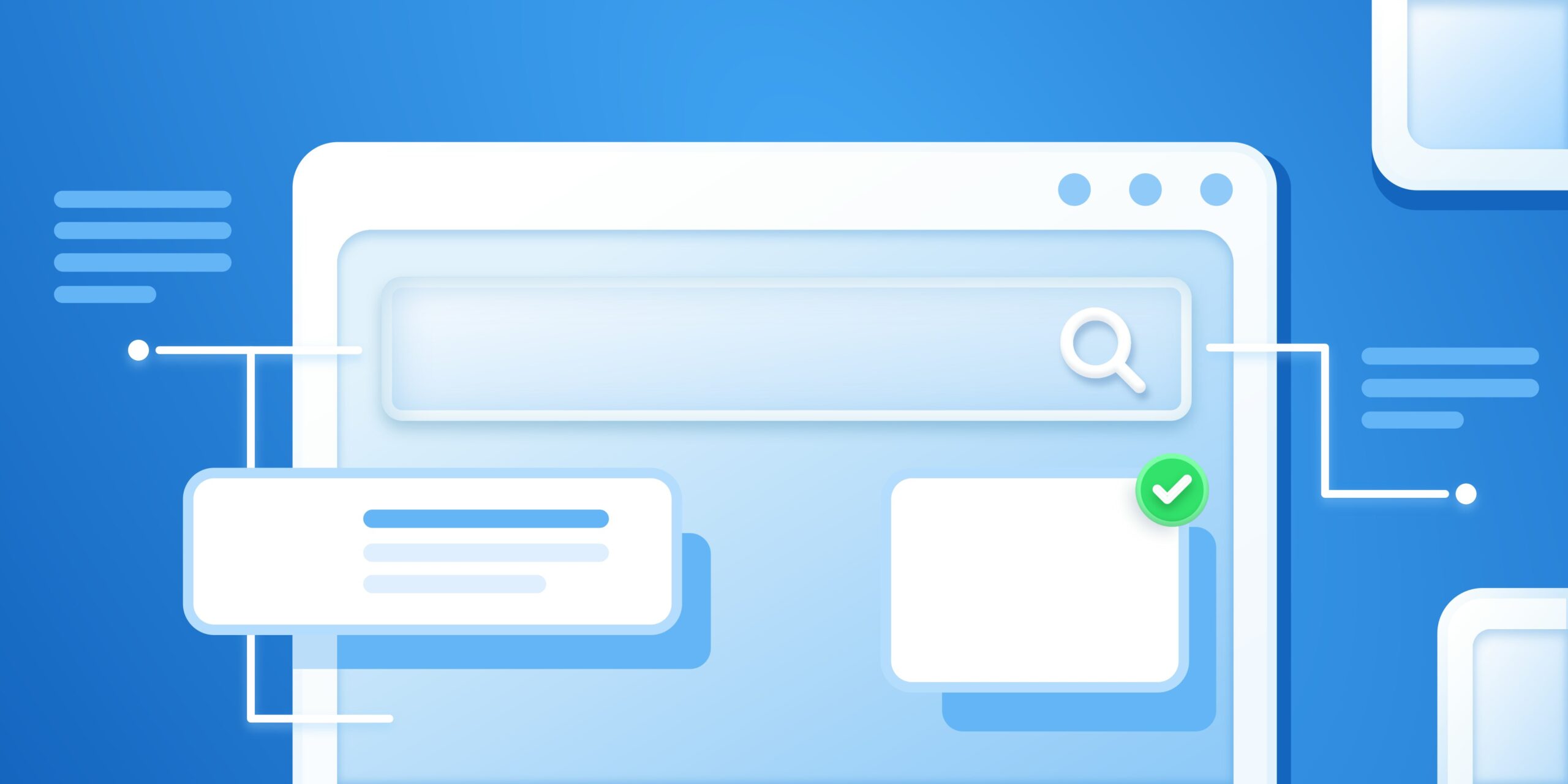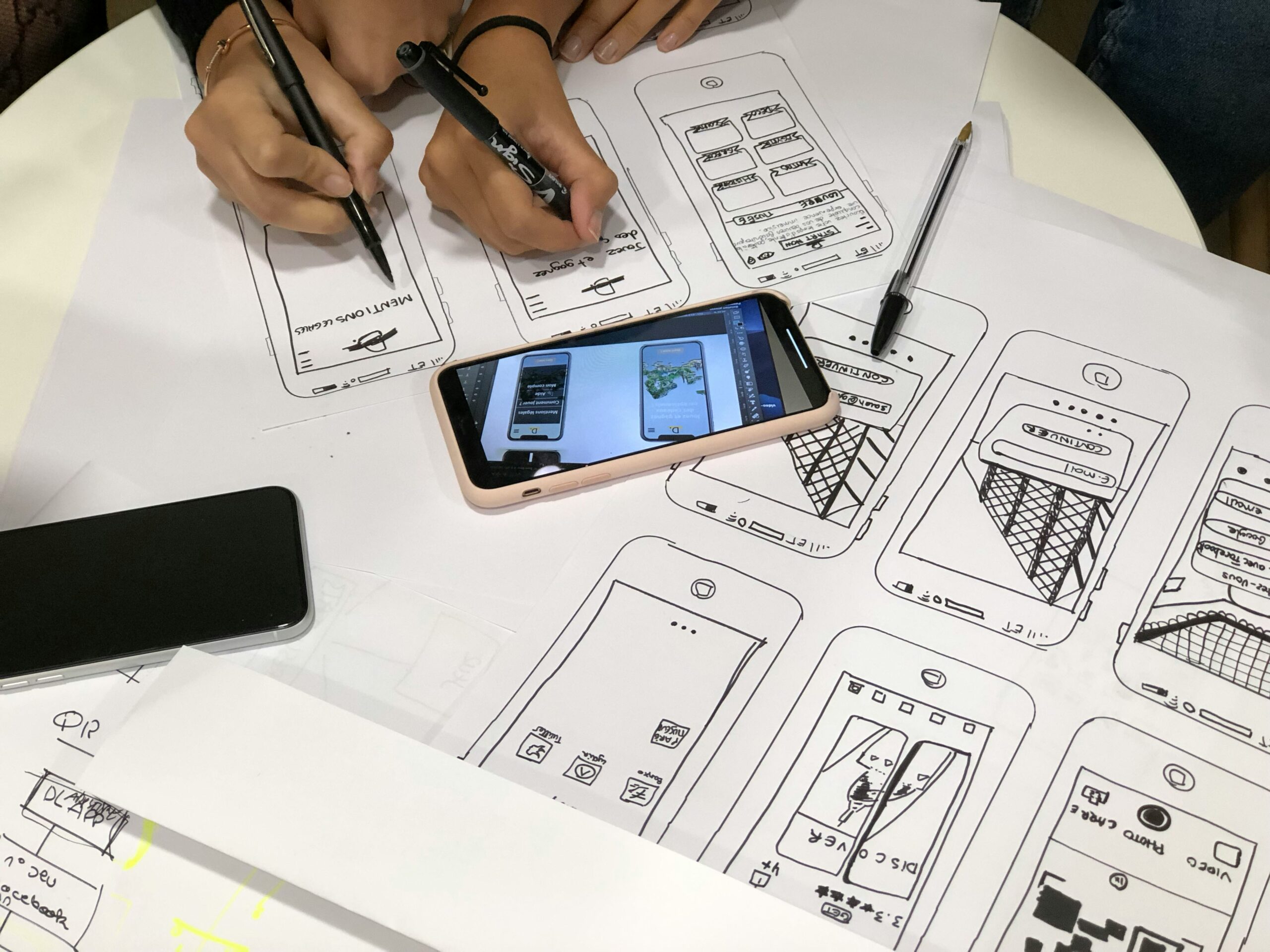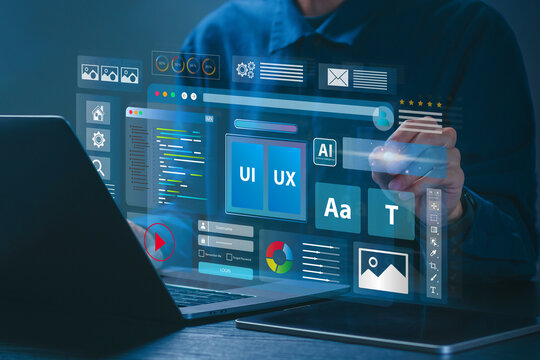What Is Web Interface Design? Key Elements, Best Practices & Importance for User Experience
When I land on a website the first thing I notice is how easy it is to find what I need. That’s no accident—it’s the result of thoughtful web interface design. This process shapes how users interact with websites and apps making sure everything feels intuitive and looks appealing.
Web interface design isn’t just about picking colors or fonts. It’s about creating digital spaces that guide users smoothly from one action to the next. I believe great design helps people connect with information and services without frustration. Let’s explore what makes web interfaces work and why they matter so much in our online world.
Defining Web Interface Design

Web interface design refers to the structured process of shaping digital environments where users interact with online platforms, using visual and interactive elements. I focus on layouts, typography, imagery, color schemes, icons, menus, and buttons to make these spaces seamless for users. I interpret web interface design as encompassing not just visual appeal but also usability principles. Designers incorporate mobile responsiveness, accessibility standards, and fast loading times as essential aspects. I streamline workflows so users complete specific tasks—like making purchases, searching content, or signing in—with minimal friction.
Core Components of Web Interface Design
| Component | Description | Example |
|---|---|---|
| Layout | Arrangement of content and navigational elements | Grid-based product pages |
| Typography | Choice of fonts, sizes, and spacing | Clear headings and body fonts |
| Color Scheme | Selected color palettes guiding user attention and mood | Contrasting call-to-action (CTA) |
| Navigation | Systems enabling users to move through the interface | Hamburger menus, sidebars |
| Interactive Elements | Elements that users can click, tap, or interact with | Buttons, toggles, sliders |
| Accessibility | Features improving use for all, including those with disabilities | Screen reader compatibility |
Web Interface Design for Online Casino Platforms
Casino web interface design involves optimizing interactive elements, game layouts, and secure transaction modules. I integrate intuitive dashboards, clear chip values, and real-time updates to support quick decision-making. Fast-loading tables and easy-to-read odds enhance the user’s experience and trust in the platform.
Comparison: Key Priorities in Web Interface Design
| Environment | Top Design Priorities | Target Action Example |
|---|---|---|
| Retail | Streamlined checkout, product visibility | Complete a purchase |
| Social Platform | Feed usability, interaction simplicity | Like or comment |
| News Outlet | Readability, breaking news alerts | View latest article |
| Online Casino | Game accessibility, secure transactions, real-time data | Place a bet or play a slot |
I consistently connect clarity, accessibility, and engagement to every interface design decision, ensuring the site not only looks appealing but also facilitates every user interaction efficiently.
Key Principles of Web Interface Design

I align web interface design with a set of foundational principles to ensure digital spaces offer seamless interaction. I apply these concepts to sites in every industry, including online casinos, social platforms, and news outlets.
Usability and User Experience (UX)
I center usability and UX on predictability and ease of use. Simple navigation bars, responsive buttons, and logical menus appear on sites like banking dashboards and casino game lobbies. Fast loading times and minimized input sequences reduce friction, letting users complete tasks efficiently. Accessibility features—closed captions, alt tags, adjustable font sizes—help users with different needs interact smoothly.
| UX Element | Purpose | Example Application |
|---|---|---|
| Navigation menu | Easy movement through site | Casino game lobby |
| Responsive button | Immediate feedback | Checkout process |
| Alt text | Screen reader compatibility | Image-heavy pages |
| Fast load times | Reduce bounce rates | Landing pages |
| Simplified input | Quicker transactions | Registration forms |
Visual Hierarchy and Layout
I set visual hierarchy and layout to direct attention and clarify functionality. Large, prominent calls-to-action (CTAs), prioritized content blocks, and contrast between text and background separate key tasks from secondary actions. Consistent spacing, card-based layouts, and alignment rules make content digestible on both desktop and mobile. I use color intensity, size, and whitespace to highlight important sections, as seen on product pages or game selection screens.
| Visual Element | Impact | Web Example |
|---|---|---|
| CTA button size | Highlights key actions | Casino “Play Now” feature |
| Color contrast | Improves legibility | News headlines |
| Card layout | Separates content blocks | Retail product listings |
| Whitespace | Reduces visual clutter | Blog article body |
| Consistent alignment | Guides user flow | Checkout pages |
Consistency and Branding
I reinforce consistency and branding by applying uniform design patterns and style guides. Branded colors, logo placement, and iconography appear throughout every page, whether in a casino’s secure login module or a retail shop’s shopping cart. Typography, button shapes, and hover effects don’t change unexpectedly, making interfaces trustworthy and cohesive. Clear branding helps users recall brands and understand page purpose instantly.
| Branding Feature | Function | Industry Application |
|---|---|---|
| Branded palette | Visual identity | Casino, e-commerce |
| Logo placement | Reinforces trust | Header/footer areas |
| Icon style | Guides quick decisions | Game category selector |
| Typeface consistency | Professionalism | News, corporate sites |
| Repeat layouts | Reduces cognitive load | Multi-step workflows |
Interactive Elements in Online Casino Interfaces
I focus casino interface design on tactile, immediate-feedback elements that drive engagement and trust. Interactive game tiles, responsive betting sliders, and animated winning sequences dominate digital casino platforms. Transparent transaction modules, easy-access rules, and responsible gaming pop-ups boost confidence and decision-making.
| Casino Interface Feature | User Impact | Example Use |
|---|---|---|
| Game tile animations | Increases engagement | Slot machine lobby |
| Responsive betting sliders | Streamlines wagering | Blackjack tables |
| Transaction transparency | Builds trust | Deposit/withdrawal |
| Instant feedback pop-ups | Informs decisions | Winning events |
| Responsible play prompts | Encourages safety | Session time alerts |
Essential Elements of a Web Interface

I recognize essential web interface elements as structural vectors guiding how users interact with digital spaces. Each element supports efficient access, intuitive controls, and direct engagement, regardless of platform or industry.
Navigation Menus
Navigation menus organize content, offering users clear paths across site sections like Home, About, and Services. Simple horizontal menus, dropdown lists, and sidebar links appear on most modern websites. Predictable position and consistent labeling reinforce usability, enabling visitors to locate resources quickly. On mobile screens, collapsible menus (examples: hamburger icons, expandable side drawers) maintain accessibility without visual clutter.
| Type | Common Use Cases | Key Feature |
|---|---|---|
| Horizontal Bar | Corporate, e-commerce | Fixed top display |
| Sidebar | Dashboards, web apps | Nested list structure |
| Hamburger/Collapsible | Mobile, responsive sites | Hides menu for space |
Buttons and Interactive Elements
Buttons trigger actions, letting users confirm, submit, or interact within the UI. Visual consistency matters, with shape, color, and placement guiding attention to primary functions (examples: “Submit,” “Play Now,” “Add to Cart”). I design feedback states like hover effects and loading indicators to communicate system activity. Sliders, toggles, and checkboxes increase usability by simplifying complex inputs.
| Interactive Element | Purpose | Example Context |
|---|---|---|
| Primary Buttons | Call-to-action prompts | “Start Game” |
| Secondary Buttons | Supplementary actions | “Learn More” |
| Checkboxes | Multiple selections | Newsletter opt-in |
| Sliders | Adjust values | Volume control |
Forms and Feedback Features
Forms collect user data, connecting users to site functions like account creation or payment. Labeling, field grouping, and placeholder text clarify what inputs are needed. I prioritize inline validation and real-time feedback to resolve errors instantly, reducing entry friction. Progress indicators and success messages further reassure users that submissions process correctly.
| Form Feature | Description | Example Scenario |
|---|---|---|
| Input Validation | Flags incomplete or invalid fields | Email entry check |
| Error Feedback | Displays corrective suggestions | Password format tip |
| Success Message | Confirms data submission | Account setup approved |
Best Practices in Web Interface Design
Maintain Consistency Across Elements I use consistent color palettes, typefaces, iconography, and button shapes to build familiarity and reinforce brand recognition. Consistency makes navigation faster and improves user trust in the interface. Brand websites like Apple and Nike use uniform layouts and button styles across pages. Prioritize Mobile Responsiveness I optimize layouts and assets for different screen sizes using responsive grids and scalable SVGs. Flexible images, touch-friendly hit areas, and adaptive menus enable seamless navigation for mobile users. Google’s Material Design system uses responsive patterns for cross-device clarity. Establish Visual Hierarchy I arrange elements to guide attention to important sections. Larger headlines, contrasting button colors, and spatial grouping highlight calls-to-action and streamline user flows. E-commerce sites like Amazon use prominent buttons and banners to focus purchase activity. Enhance Accessibility I implement high-contrast text, alt text for images, keyboard navigability, and ARIA labels to support users with disabilities. Accessibility features ensure a broader audience interacts with the interface efficiently. The Web Content Accessibility Guidelines (WCAG) serve as a reference for accessible site design. Provide Fast Feedback on Interactions I design buttons, forms, and navigation elements to show immediate feedback on clicks, submissions, or errors. Real-time responses help reduce user confusion and reinforce a sense of progress. Modern interfaces use loading indicators, success messages, and highlighted error states. Simplify Navigation I use clear menu labels, logical site structures, and persistent navigation bars to simplify site exploration. Clear navigation helps users locate information quickly. News outlets like BBC provide categorized tabs and breadcrumb trails for orientation. Optimize Web Interface Design for Online Casinos I focus on intuitive layouts, visible betting options, and secure authentication forms for casino platforms. Game carousels and real-time balance indicators let users make informed decisions. Secure casino interfaces highlight payout percentages, transaction status, and regulatory icons to increase user confidence.
| Web Interface Practice | Casino Example | Core Benefit |
|---|---|---|
| Consistency | Repeated icon sets | Increases user trust |
| Mobile Responsiveness | Touch-friendly game grids | Expands device reach |
| Visual Hierarchy | Highlighted jackpot banners | Directs user actions |
| Accessibility | Screen-reader support | Ensures inclusivity |
| Fast Feedback | Bet confirmation popups | Reduces user uncertainty |
| Simplified Navigation | Sticky game filters | Accelerates game discovery |
Test and Iterate Design Choices
I validate interfaces through usability testing and performance analytics. User feedback, click heatmaps, and conversion metrics help refine layouts and interactions for maximum efficiency and satisfaction. Continuous improvement supports evolving user expectations and technological updates.
Common Challenges and How to Overcome Them
Usability Problems Usability problems in web interface design disrupt user journeys and diminish satisfaction. Unclear navigation, inconsistent iconography, or overloaded pages commonly cause these problems. I streamline navigation menus, standardize icons, and limit on-page elements to 5–7 distinct content blocks per screen. Regular A/B testing identifies friction points that lower conversion rates. Mobile Responsiveness Mobile responsiveness challenges arise due to varied device sizes and input methods. When sticky menus overlap important content sections on smartphones, readability suffers. I apply fluid grid systems and set minimum touch target sizes of 48x48px, following Google Material Design guidelines. Accessibility Barriers Accessibility barriers exclude users with disabilities from interacting with web interfaces. Missing alt text on imagery, low-contrast color palettes, or non-semantic HTML tags present issues. I implement ARIA attributes, WCAG-compliant color contrasts (minimum 4.5:1 for body text), and keyboard navigation support for interactive components. Performance Constraints Performance constraints degrade user experience by causing slow load times or laggy interface feedback. Heavy graphics, unoptimized scripts, and excessive animations contribute to these issues. I compress images (30–60% optimization), minify resources, and selectively load scripts only when needed. Secure and Trustworthy Online Casino Interfaces Online casino platforms present unique interface challenges requiring enhanced security and clear interaction design. I implement clear CTAs for secure logins, visible indicators for encryption (such as a lock icon), and non-intrusive KYC verification steps to minimize drop-offs.
| Usability Challenge | Typical Cause | Optimized Solution |
|---|---|---|
| Confusing navigation | Buried or mislabeled menu items | Simplified, clear structure |
| Overwhelming content | Dense layouts, lack of whitespace | Content grouping, spacing |
| Inconsistent icons | Multiple icon styles | Unified icon library |
| Mobile Challenge | Occurrence Example | Solution |
|---|---|---|
| Menu overlap | Collapsible nav covers main content | Off-canvas menus for mobile screens |
| Button misfires | Small touch zones | Scalable, finger-friendly interactive areas |
| Layout distortion | Fixed-width containers | Responsive flex and percentage-based elements |
| Accessibility Issue | User Group Affected | Key Enhancement |
|---|---|---|
| No descriptive alt text | Screen reader users | Add accurate image descriptions |
| Poor color contrast | Low-vision users | High-contrast color schemes |
| Keyboard traps | Non-mouse users | Full keyboard navigability |
| Performance Issue | Typical Cause | Solution |
|---|---|---|
| Slow load times | Large image files | Image compression, next-gen file formats |
| Laggy feedback | Non-async scripts | Async/defer for JS, minimal dependencies |
| Excessive animations | Overuse of transitions | Limit to 1–2 purposeful microinteractions |
| Casino-Specific Challenge | User Impact | Solution |
|---|---|---|
| Complicated login/auth flows | Higher user abandonment | Streamlined, two-step authentication |
| Ambiguous transaction feedback | Uncertainty in deposits | Immediate confirmation and status indicators |
| Distracting promotional pop-ups | Interrupted play sessions | Limit pop-up frequency, contextual placement |
Conclusion
Web interface design is always evolving and demands a thoughtful approach that puts users first. I find it fascinating how even small tweaks in layout or navigation can make a huge difference in how people interact with digital spaces. Staying curious and open to feedback helps me create interfaces that are both visually appealing and highly functional. As technology and user expectations shift I make it a priority to keep learning and refining my design process. By focusing on clarity accessibility and user trust I can build web experiences that stand out in any industry.
Frequently Asked Questions
What is web interface design?
Web interface design is the process of creating digital environments like websites and apps using visual and interactive elements, such as layouts, typography, colors, buttons, and menus, to ensure a smooth and intuitive user experience.
Why is web interface design important?
Good web interface design helps users navigate websites easily, access information quickly, and interact smoothly, reducing frustration and increasing satisfaction. It’s essential for building trust and keeping users engaged.
What are the key elements of a web interface?
Key elements include clear layout, readable typography, color schemes, navigation menus, interactive buttons, forms, and accessibility features that make it usable for everyone, including those with disabilities.
How does mobile responsiveness impact user experience?
Mobile responsiveness ensures that websites and apps adapt to different screen sizes and devices, providing seamless navigation and interaction for users on smartphones, tablets, and desktops.
What is the significance of accessibility in web design?
Accessibility ensures that web interfaces can be used by people with disabilities, expanding reach and complying with legal standards. Features like alt text, keyboard navigation, and proper contrast are essential.
How do usability and UX principles improve interface design?
Usability and UX (User Experience) focus on making interfaces predictable and easy to use, guiding users through clear navigation, responsive buttons, and intuitive layouts that enhance satisfaction.
How are web interfaces in online casinos optimized?
Online casino platforms optimize interactive elements, layouts, and secure transaction modules to build trust, simplify decision-making, and ensure safe user experiences.
What are common challenges in web interface design?
Challenges include usability issues, lack of mobile responsiveness, accessibility barriers, and performance problems. Addressing these ensures a functional, user-friendly interface.
What are the best practices for effective web interface design?
Best practices involve consistent design, mobile responsiveness, clear visual hierarchy, strong accessibility, fast feedback on actions, and simple, intuitive navigation.
Why is ongoing testing and iteration important in web design?
Continuous testing and iteration help identify and fix usability or performance issues, ensuring the interface meets evolving user needs and stays current with technology.
